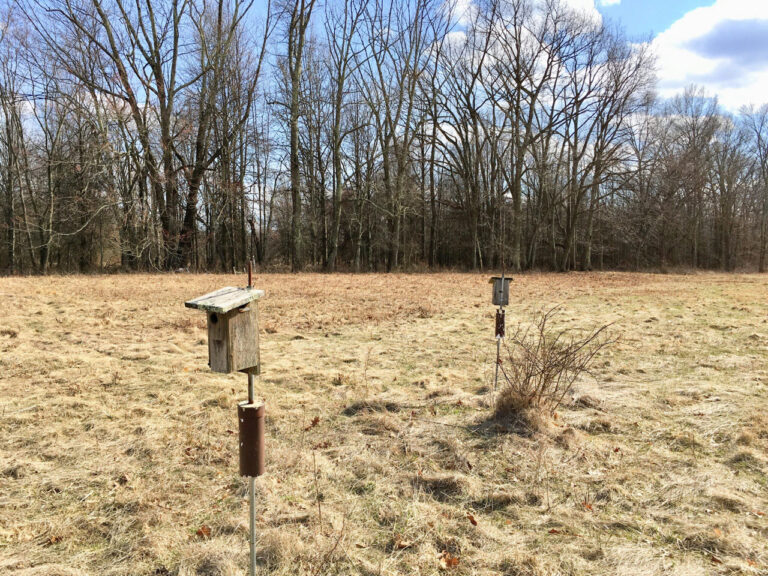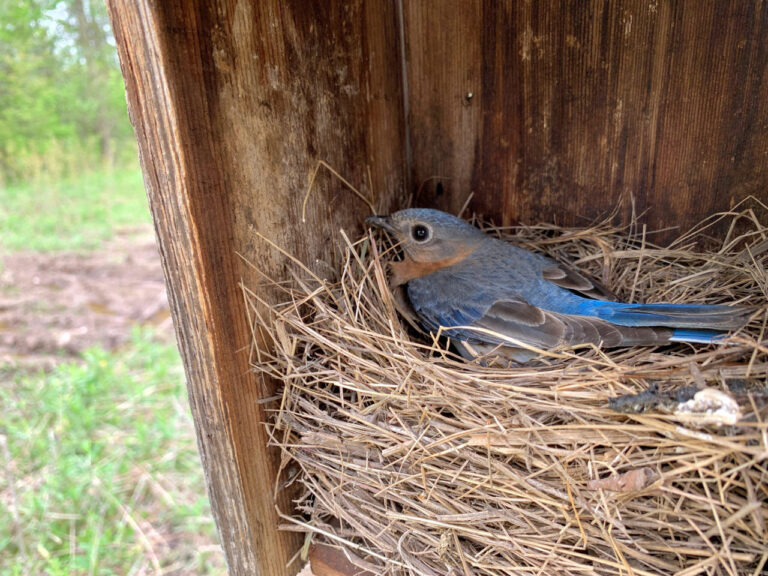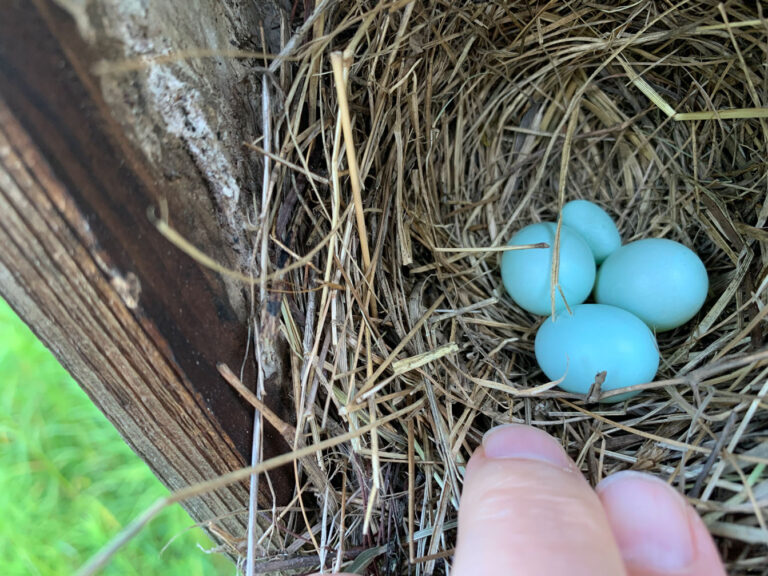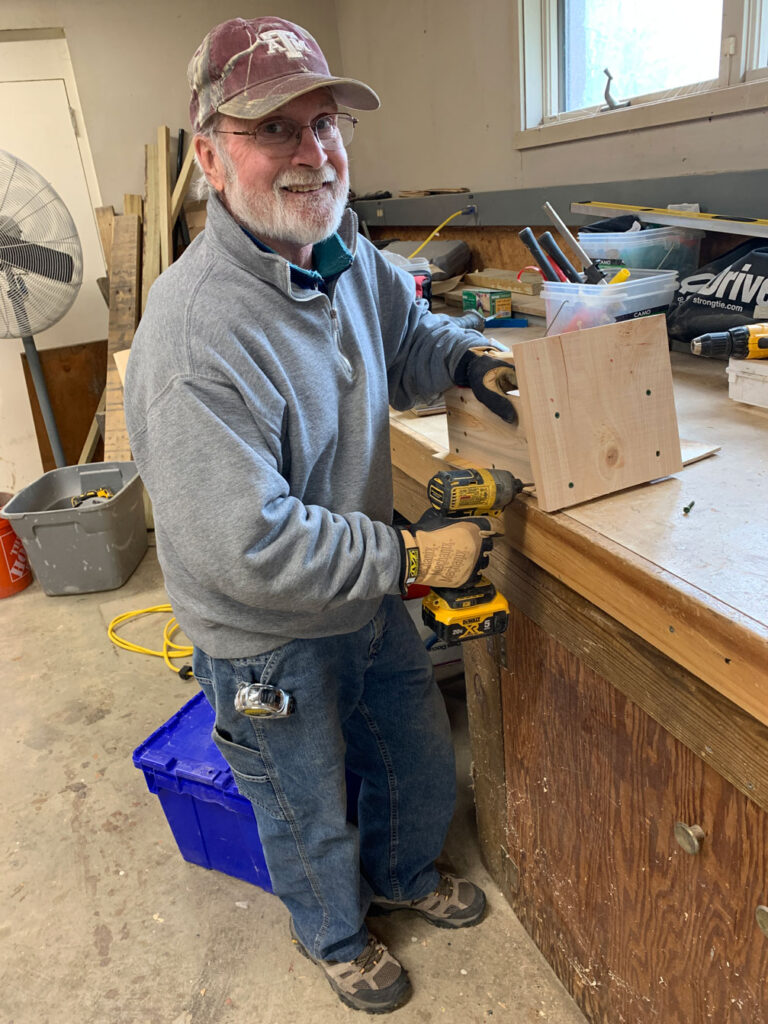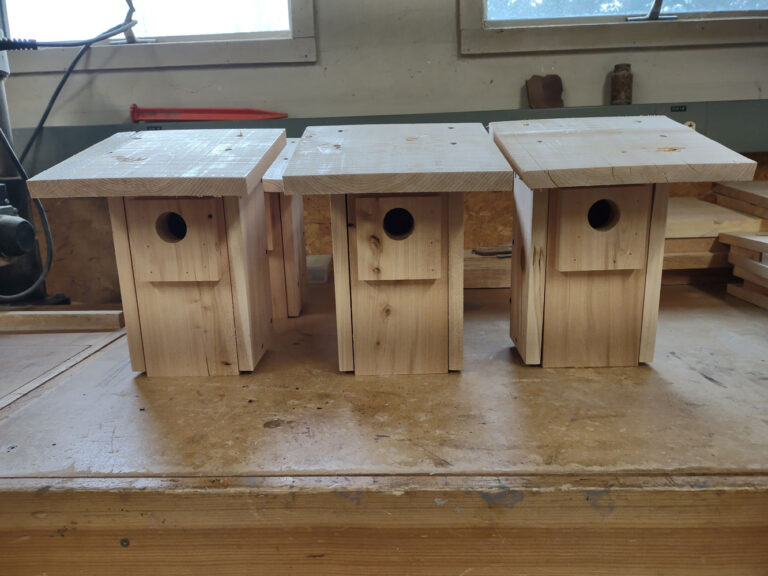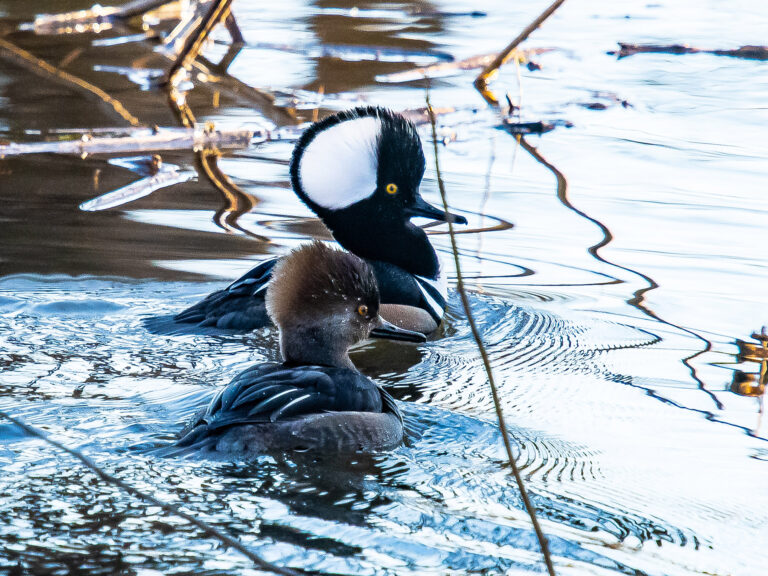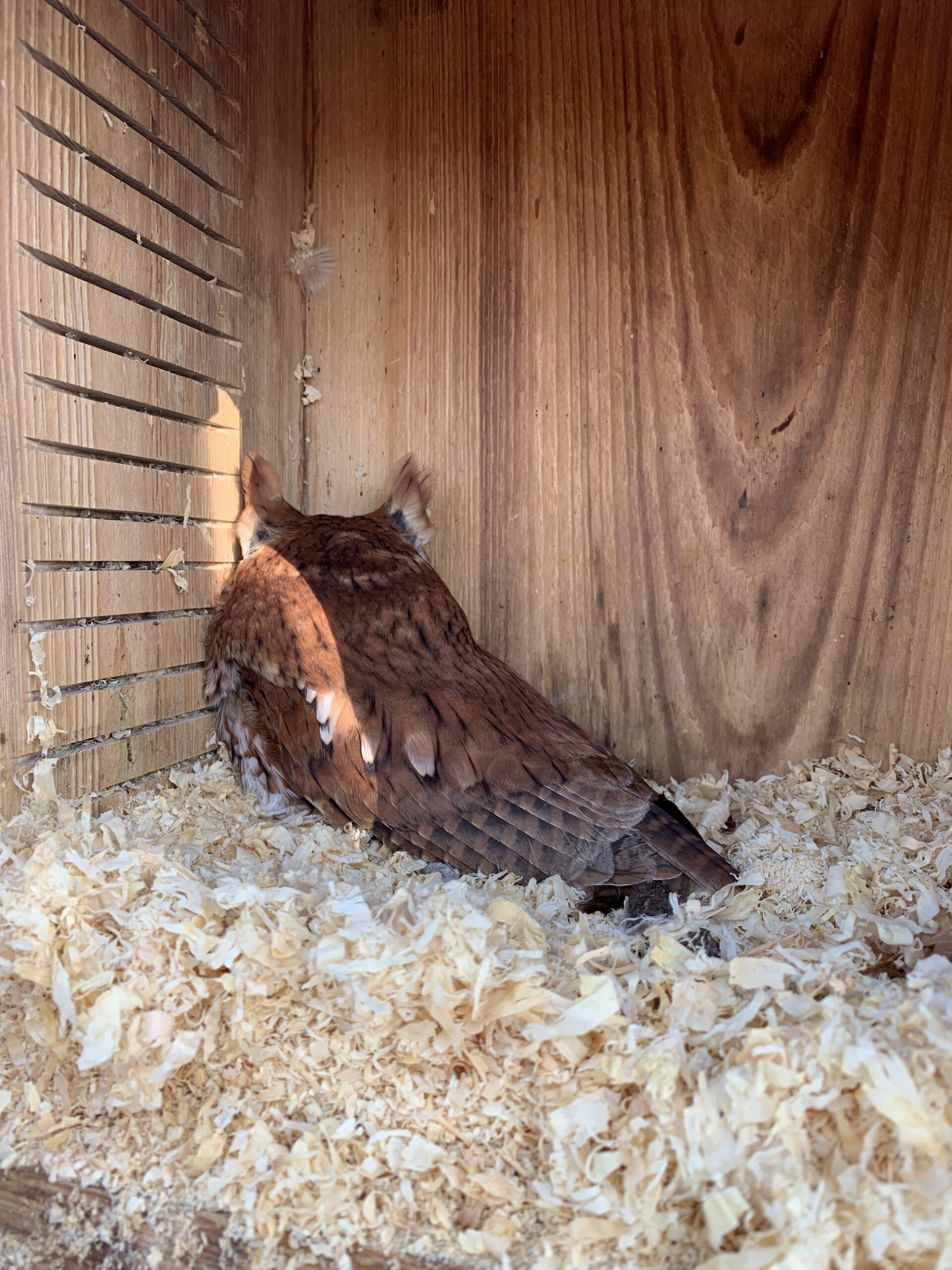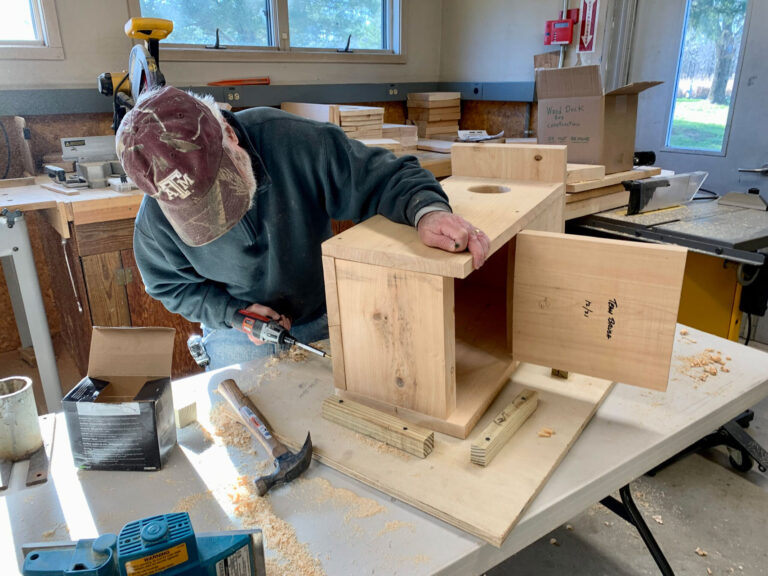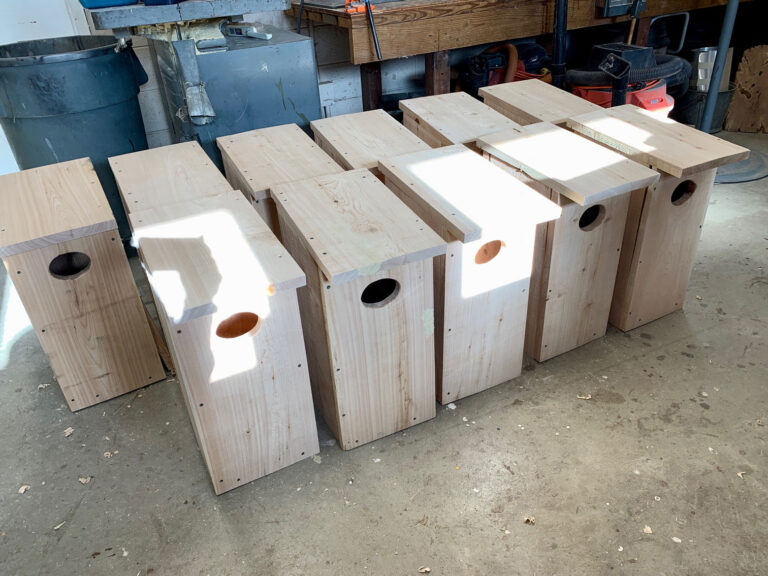Visitors to the Great Swamp NWR often notice the many small “bird boxes” seen at various locations around the Refuge, as well as larger boxes mounted on metal posts. Both kinds of bird boxes are maintained by a group of dedicated Friends volunteers throughout the year.
Bluebird Boxes
There are about 135 of these boxes in the Management Area of the refuge, designed to provide a nest site primarily for the Eastern bluebird, a tree-cavity nester. Bluebird populations have declined throughout the U.S. in the past century, mostly due to habitat loss (cutting down trees that provided nest cavities), and competition from several introduced species, particularly the common starling. Most bluebird nest boxes are paired, with one box occupied by bluebirds, while the other box is often used by another cavity nester, the tree swallow. Pairing the boxes results in greater nesting success by the bluebirds as there is no direct competition between bluebirds, that primarily hunt for insect prey on the ground, and tree swallows, that hunt and catch insects in mid-air.
The nest box trail at Great Swamp, first established back in the 1970s, has been maintained by Friends volunteers since 2001, led by volunteer Leo Hollein. Refuge staff regularly mow the fields, providing ideal habitat for ground-feeding bluebirds. Beginning in April, at the start of the nesting season, a group of volunteers monitor the boxes on a weekly basis, until the end of the nesting season in August. The volunteers gather data on nesting time, number of eggs, number of hatchlings, and how many of the young fledged.
In 2022, thanks to the generous support of the Friends, volunteers constructed 20 new bluebird boxes, using white cedar wood, that should last many years in the field.
Duck Boxes
The larger boxes seen throughout the Refuge have been designed to provide an ideal nesting location for another species of bird that is a tree-cavity nester: the attractive wood duck. There are close to 180 of these boxes scattered throughout the refuge, often out of sight in wooded parts of the Management Area. Wood duck populations also declined in the 20th century as wooded areas were cleared. The introduction of nest boxes has seen a rebound in the populations of these ducks. Another beautiful duck, the hooded merganser, will also occasionally nest in the Great Swamp boxes, and Eastern screech owls often use the boxes as a roosting site, especially in the winter.
Friends recently provided support for the purchase of cedar wood to construct 40 new duck boxes, mostly as replacements for older boxes that have deteriorated after as much as 20 years in the field. We look forward to many more years of helping both Eastern bluebird and wood duck populations thrive at Great Swamp National Wildlife Refuge.
Long-time volunteer Leo Hollein, who led both the bluebird and wood duck box programs at Great Swamp NWR since 2001, passed away in January 2023. He will be greatly missed by all those who knew him, but his outstanding legacy on behalf of the wildlife of the Refuge will continue into the future.


